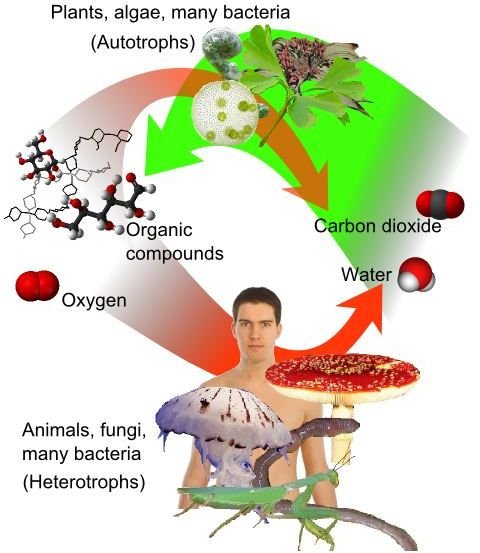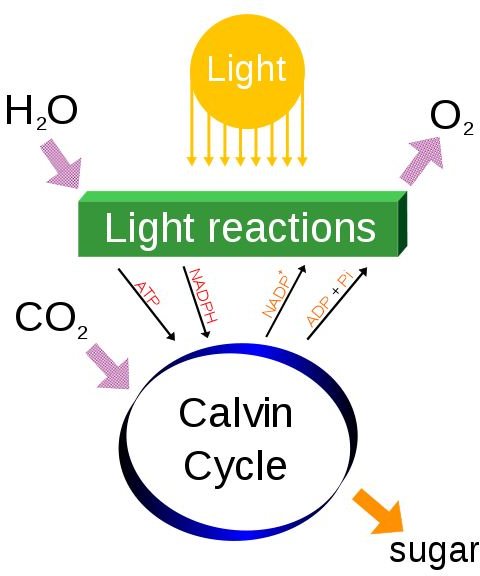Facts About Basic Plant Metabolism Focusing on Plant Photosynthesis
Basic plant metabolism revolves around two different processes including photosynthesis and respiration. All forms of life on Earth rely on photosynthesis. Respiration is also essential and releases carbon dioxide. Plant metabolism is essential and understanding it will help everyone understand life and how living things, not just plants, survive and thrive.
Plant Photosynthesis
Light energy is converted into chemical energy and this is stored in bonds of sugar through the process known as photosynthesis. This process is exclusive to plants, and some algae, and is a basic element of plant metabolism. In order for plants to make sugar, they only need light energy, water, and carbon dioxide. The photosynthesis process occurs within the chloroplast, specifically the chlorophyll, which is the green pigment involved in this process.
This process occurs primarily in the leaves of the plant and rarely occurs in the stems or other parts of the plant. A typical plant leaf typically consists of a lower and upper epidermis, the vascular bundle (veins), the mesophyll, and the stomates. There are no chloroplasts in the lower and upper epidermal cells, so plant photosynthesis does not happen here. These plant leaf components serve as protection for the other parts of the leaf. The stomates are responsible for exchanging air and they allow carbon dioxide to go out and allow oxygen to come in. This component of plant leaves are holes primarily found in the lower epidermis. The vascular bundle are an essential player in a leaf’s transportation system. They move nutrients and water through the plant as they are needed. Photosynthesis occurs within the chloroplasts that are located within the mesophyll cells.
A chloroplast is composed of many parts including the inner and outer membranes, thylakoids stacked in grana, stroma, and intermembrane space. The thylakoids’ membranes are what the chlorophyll is built into. Chlorophyll appears green in color due to absorbing blue and red light, which leaves our eyes unable to see these colors. The green light is seen because it is not absorbed, so chlorophyll is seen as green. The energy absorbed by the blue light and red light is used, which leads to the process of photosynthesis. The green light that is seen does not contribute to photosynthesis because the plant cannot absorb it.
Photosynthesis is a two-part process. A process that occurs in the thylakoid membrane, known as light reaction, is the process that turns light energy into chemical energy. Light is necessary for this process to take place. Several different pigments are involved in this process and the different pigment colors absorb different colors of light. These are only slightly different from each other, then the energy that is created that is passed to the central chlorophyll molecule for this process.
Adenosine triphosphate (ATP), a chemical that cells use to store energy, stores the energy that is harvested by the light reaction. This chemical is very similar to human DNA’s building blocks.
Carbon dioxide is converted into sugar within a chloroplast’s stroma. This photosynthesis process needs the light reaction products (NADPH and ATP) to occur, but not light. This is referred to as a dark reaction and this leads to sugar formation by involving the Calvin cycle. Most plants feed carbon dioxide into the Calvin cycle directly.
Respiration

Plant respiration differs greatly from photosynthesis; its metabolic counterpart, but is quite a necessary process for plant survival as well as that of other living things. This component of basic plant metabolism is a process in which the energy that is stored within organic molecules is released so that metabolic work can be done. It is controlled by enzymes, conducted in all living cells, and releases water and carbon dioxide. This form of respiration is not the same type of respiration that is associated with humans and animals breathing because plants do not have respiratory systems and they do not breathe. In plants, gases passively diffuse into the epidermal cells or through the stomata, into the plant. These gases then meet the moist cellular membranes where water is then moved along diffusion gradients within and between cells. This diffusion is not aided by special characters. Respiration is originated by a molecule known as glucose. There are several stages of plant respiration.
Glycolysis is the stage in which a 6-carbon glucose molecule is broken down into two, 3-carbon pyruvate molecules. This stage occurs within the cytoplasm. During aerobic respiration (oxygen is present), pyruvate is used in the Krebs cycle, oxidative phosphorylation, and electron transport chain that occur within the mitochondria. The Krebs cycle, also referred to as the citric acid cycle, happens within the matrix. Oxidative phosphorylation and electron transport chain happen deep within the cristae. During anaerobic respiration (oxygen is not present), pyruvate is used during fermentation. Lactate formation occurs within bacteria, protist cells, animals, and fungi. Alcohol fermentation occurs within plant cells and yeast.
The thermodynamic efficiency varies between 22 percent and 38 percent in aerobic respiration. It is significantly less in anaerobic respiration. When energy is lost, it is released as heat and some of this heat is used by plants in a few different ways.
Key Differences Between These Two Metabolic Processes
Here is a list of comparisons between plant respiration and photosynthesis.
Photosynthesis
- Energy is stored with sugar molecules
- Water and carbon dioxide are used
- Weight is increased
- Light is required
- Happens within chlorophyll
- Oxygen is produced in green organisms
- ATP is produced with light energy
Respiration
- Energy is released from sugar molecules
- Water and carbon dioxide are released
- Weight is decreased
- This process can occur in darkness or in light
- This process happens within all living cells
- This process uses oxygen
- ATP is produced when energy is released from sugar
Understanding basic plant metabolism not only allows us to better understand plant life, but all life. There are basic differences between living things, such as respiration methods and plant photosynthesis, but many things are the same, such as nutrient requirements.
Resources
Biology Online. (2010). Plant Metabolism. Retrieved on February 7, 2010 from Biology Online: https://www.biology-online.org/11/9_plant_metabolism.htm
Image Credits
Photosynthesis Diagram: Daniel Mayer – Wikimedia Commons
Respiration Diagram: Mikael Haggstrom – Wikimedia Commons
